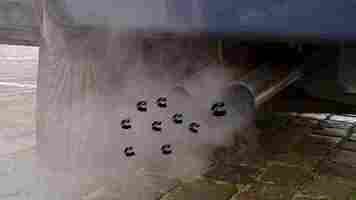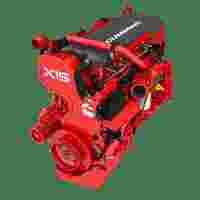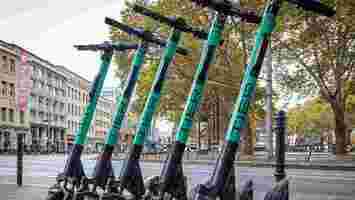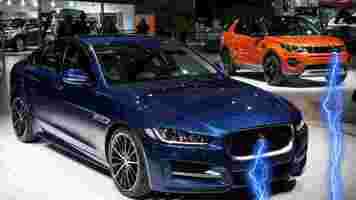Cummins won’t let diesel die: New emission lowering tech throws fuel a lifeline, for now
This article was originally published by Michael Coates on Clean Fleet Report , a publication that gives its readers the information they need to move to cars and trucks with best fuel economy, including electric cars, fuel cells, plug-in hybrids, hybrids and advanced diesel and gasoline engines.

According to dozens of automotive story headlines, the internal combustion engine, running on gasoline or diesel, is dead or dying as customers, auto companies, and investors flock to electric powertrains. Even heavy-duty trucks running on massive diesel engines, which were expected to be the last on-road holdouts, have been mandated to turn completely to zero emissions in by the state of California starting in 2045.
While 2045 may still be more than two decades away, emissions advances in internal combustion engines (ICE) are continuing. A new technology may take the already quite clean (especially compared with engines of just a little more than a decade ago) engines to a level that reduces smog-producing emissions while increasing fuel economy and yet not losing any performance. The technology study was announced last month by Cummins, the largest heavy-duty engine manufacturer, and Tula Technology, a technology innovator in Silicon Valley that has become a supplier to OEMs.


According to the study, adding Tula’s diesel Dynamic Skip Fire (dDSF) technology to a current Cummins engine resulted in a 74% reduction in NOx and a 5% reduction in CO 2 compared to the base engine. Running dDSF also saved 20% in fuel. The engine used for the test was a Cummins X15, a current state-of-the-art diesel engine found in many Class 8 trucks. DSF is an advanced cylinder deactivation system that micromanages each of the engine’s cylinders to balance torque demands while optimizing fuel economy.
The test replicated not only the usual test cycles used to certify engine emissions, but also ones designed to capture emissions in difficult low-speed, low-load situations, where diesel engines typically have higher emissions. Tula said the tests included dyno testing as well as on-road testing. Testing is ongoing.
“Our mission at Cummins is to make people’s lives better by powering a more prosperous world, and we accomplish this through innovation,” said Lisa Farrell, director, Accelerated Technology Center for Cummins Inc. “Tula’s dDSF technology provides significant benefits to reducing NOx and CO 2 emissions under low-load vehicle operation, which will aid our efforts to produce more reliable, more powerful engines while meeting our environmental goals.”
Cummins, evolving into a propulsion-system company from its history as an diesel engine manufacturer, has not only embraced improvements to conventional engines, but also is developing battery electric and fuel cell electric powertrains as well as also remaining the major heavy-duty natural gas engine provider through its Cummins Westport operation. Its diesel engines remain mainstays at all of the major North American OEMs.
“NOx standards are becoming progressively more stringent for diesel engines, and meeting those standards is increasingly challenging, even for a class-leading, efficient engine like the Cummins X15 HD,” said Scott Bailey, CEO of Tula Technology. “Our dDSF is a powerful and unique technology that enables original equipment manufacturers to significantly reduce NOx emissions that contribute to smog while simultaneously reducing fuel consumption and greenhouse gas production. We appreciate the opportunity to work with Cummins to demonstrate the capability of our technology.”
Tula has a track record with gasoline engine applications of the DSF technology. It has worked since 2018 with General Motors to incorporate DSF into more than a million of the company’s V8-engine models, including the Cadillac Escalade, Chevrolet Silverado and Suburban, and GMC Sierra and Yukon. The company estimates that the use of DSF has prevented up to one million tons of CO 2 from being emitted by these vehicles annually because of fuel economy improvements.
Like Cummins, Tula is also looking beyond ICE , applying its efficiency technology to electric motors to increase range while using less energy. According to a recent paper by Tula, it has simulated efficiency improvements of 2.5% on the Worldwide Harmonized Light Vehicle Test Procedure (WLTP) cycle for EVs. The software upgrade doesn’t require any hardware changes to the motor or vehicle. It also reduces the amount of rare earth materials needed.
The test participants didn’t speculate on when the dDSF might be available on production engines, but the U.S. Environmental Protection Agency is beginning looking at more stringent NOx limits for future heavy-duty diesel engines and the state of California already has a regulation that will begin in 2024 dropping the allowable NOx limit by 75% while also instituting testing on the low-load cycles that the dDSF technology is aimed at. That standard is scheduled to drop further in 2027.
Do EVs excite your electrons? Do ebikes get your wheels spinning? Do self-driving cars get you all charged up?
Then you need the weekly SHIFT newsletter in your life. Click here to sign up .
Awful parking is the worst thing about escooters — TIER has a plan to fix it
This article was originally published by Christopher Carey on Cities Today , the leading news platform on urban mobility and innovation, reaching an international audience of city leaders. For the latest updates follow Cities Today on Twitter , Facebook , LinkedIn , Instagram , and YouTube , or sign up for Cities Today News.

Escooter firm TIER has partnered with mapping provider Fantasmo to create what it claims is the world’s most accurate escooter parking system.
Starting in Paris and York, TIER will implement Fantasmo’s “Camera Positioning System” (CPS), a new positioning technology that is ten times more accurate than GPS and can validate e-scooter parking within 50 centimeters or less using a camera phone.
TIER says the new feature will all but eliminate irresponsible parking, an issue that has plagued city authorities globally since escooters were first rolled out on streets.
At the end of their journey, riders can scan the escooter’s QR code and point their phone’s camera at a nearby building, which Fantasmo uses to confirm they are parked within a city-approved area.
Matthias Laug, CTO and co-founder of TIER, said: “With this new technology, we can directly address the concerns of vulnerable road users when it comes to how scooters are parked. The CPS mapping used by Fantasmo has a distinct advantage over GPS signals, which are often obscured by buildings, poor connectivity, trees, and atmospheric conditions.
“Besides educating our users, we want to provide them with the technology that they need to use escooters safely and responsibly and this partnership does just that.”
Ground-level mapping
Los Angeles-based Fantasmo builds 3D maps of cities by foot, using its camera and sensor-equipped “Explorer” backpack.
The backpack, which has a 3D mapping solution with a six-camera array, LIDAR, and accompanying mobile control app, is worn by operators who walk around cities. The captured data is then processed with Fantasmo’s software into a detailed 3D model of the cities.
The company has so far mapped over 1,800 kilometers of Parisian streets at ground level using the technology, and claims it is more accurate than satellite-based GPS, which is not always reliable in dense urban areas.
Fantasmo Co-Founder Jameson Detweiler said: “We’re excited to be working with TIER because their commitment to great parking compliance is the perfect real-world validation of our CPS technology. By mapping cities at the ground level, as pedestrians, we can help micromobility safely thrive in cities around the world.”
Paris crackdown
Following an influx of escooters in 2018 and a subsequent rise in complaints from locals frustrated with devices congesting public areas and causing an increase in accidents, Paris Mayor Anne Hidalgo introduced a raft of measures aimed at curbing their improper use, including fines of 135 euros (US$150) for riding on pavements, and banning the parking of e-scooters in non-designated zones.
Under current regulations, e-scooters can only be left in parking spaces allocated for cars and motorized two-wheel vehicles.
Mayor Hidalgo also tightened the regulation of e-scooter firms, selecting three ‘official operators’ – TIER, Lime and Dott – in July 2020, after 16 scooter-sharing companies responded to the city’s request for proposals to operate.
Each company was awarded a two-year contract allowing it to deploy 5,000 e-scooters throughout the city, for a total of 15,000 scooters.
SHIFT is brought to you by Polestar. It’s time to accelerate the shift to sustainable mobility. That is why Polestar combines electric driving with cutting-edge design and thrilling performance. Find out how .
Breaking: Jaguar Land Rover is going all-electric from 2025
British carmaker Jaguar Land Rover has vowed to begin offering all-electric vehicles by 2025.

Jaguar has vowed to pivot away from combustion engines entirely, and will be a fully electric brand within five years.
However, Land Rover will unveil six all-electric vehicles by 2025, which will be offered alongside its current range. The first Landy EV is expected to be unveiled in 2024.
The car making conglomerate is reportedly going to develop three model platforms, and will ditch its current approach to chassis design, which seems to operate on a case-by-case basis at the moment.
One platform will be reserved exclusively for Jaguar.
Most importantly, though, these platforms will be designed on electric focused platforms. When combustion vehicles are repurposed as EVs, there are always compromises, mostly on battery capacity and subsequently the cars’ range.
According to AutoCar , the electric Land Rover models will be built on the company’s Modular Longitudinal Architecture. This platform is focused on EVs, but can still be used for combustion engine vehicles.
For British drivers, the pivot to electric drivetrains won’t necessarily come as a surprise. The UK is banning the sale of new gasoline vehicles in 2030 , handing legacy carmakers an ultimatum: go electric, or fall into a pit of irrelevance.
Last year, Jaguar trademarked “EV-Type,” fueling speculation that an all-electric F-Type was on the way. Looks like we won’t have to wait much longer to find out.
SHIFT is brought to you by Polestar. It’s time to accelerate the shift to sustainable mobility. That is why Polestar combines electric driving with cutting-edge design and thrilling performance. Find out how .